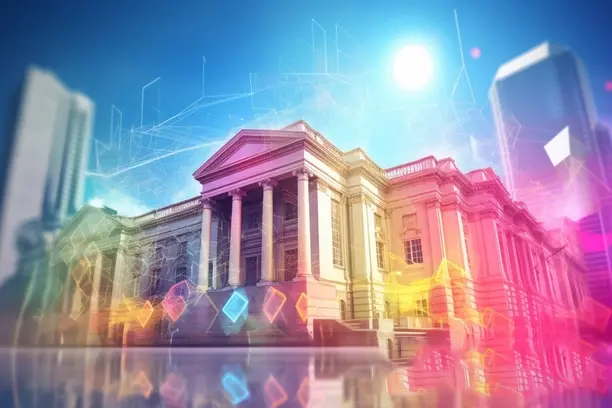What does graphics card mining mean?
Graphics card mining (GPU Mining) refers to the process of utilizing graphics cards (GPUs) for cryptocurrency mining. Its basic principle is to solve complex mathematical problems in the cryptocurrency network through the powerful computing power of the graphics card, so as to obtain cryptocurrencies as rewards. With the explosion of cryptocurrencies such as Bitcoin and Ether, graphics card mining has become an important way for many people to enter the crypto world. In this article, we will analyze the principles, steps, advantages and disadvantages of graphics card mining, as well as how to start mining and other related issues.

Basic principles of card mining
At its core, graphics card mining uses the parallel processing power of graphics cards (GPUs) to solve mathematical problems in cryptocurrency networks. These problems are usually hashing operations that aim to validate transactions on the blockchain and add new blocks to the blockchain. In this process, miners compete to be the first to solve the math problem, and are rewarded with blocks (usually a certain amount of cryptocurrency) for solving it.
Unlike central processing units (CPUs), which rely on a single core for processing, graphics cards have thousands of processing cores and are therefore able to handle a large number of computational tasks in parallel, which makes them very efficient in the mining process. This is why graphics cards are gradually replacing traditional CPUs in cryptocurrency mining.
Why choose a graphics card for mining?
The main reason for choosing graphics card mining is that graphics cards have relatively high computing performance and low power consumption, which makes them suitable for long-term continuous operation. Compared to ASIC (Application Specific Integrated Circuit) miners, graphics cards have many advantages, although their performance is a bit lower.
1. Computational Efficiency: The multi-core design of the graphics card makes it more efficient in handling the mathematical calculations of cryptocurrency mining, especially in algorithms that require a large number of parallel operations, such as ethereum.
2. Lower cost: Compared with dedicated ASIC miners, graphics cards are less expensive to purchase and can be used flexibly for other computing tasks such as gaming, graphics processing, etc.
3. Scalability: Graphics cards are highly scalable, so miners can add more graphics cards as needed to increase mining performance without replacing the entire device.
Graphics card mining steps and settings
To start graphics card mining, you basically need to prepare the following steps:
1. Prepare hardware equipment: Graphics card is the core of mining, it is very important to choose a suitable graphics card, NVIDIA and AMD are the mainstream graphics card brands in the market, with NVIDIA's RTX series and AMD's RX series graphics cards being the most common. You will also need a computer (preferably a motherboard with multiple PCI slots) and a stable power supply.
2. Install mining software: Mining software is a tool for mining, common mining software include Claymore, Ethminer, etc. These software support different kinds of cryptocurrency mining and can match the computing power of your graphics card. These programs support different kinds of cryptocurrency mining and are well matched with the computing power of your graphics card.
3. Joining a Mining Pool: Joining a mining pool is an important step in improving the efficiency of mining. A mining pool is a group of miners who work together to solve mathematical problems in a cryptocurrency network, and rewards are distributed to each miner based on their contribution. Common mining pools include F2Pool, Ethermine, and so on.
4. Configure the mining software: Depending on the mining pool you choose, you need to set the mining pool address, wallet address and other information in the mining software. After the setup is complete, the mining software will start running and submit the solved math problem to your mining pool.
Advantages and Disadvantages of Graphics Card Mining
Advantages:
1. High computational performance: Graphics cards have powerful parallel computational capabilities, making them the best choice for cryptocurrencies that require a lot of computation, such as ethereum.
2. Relatively low cost: Although high-efficiency graphics cards are not cheap, they have lower initial investment and maintenance costs than specialized ASIC miners.
3. Strong sustainability: Graphics cards can be used not only for mining, but also for other purposes, such as gaming, design work, etc., so their payback period is shorter and the investment risk is lower.
Disadvantages:
1. Lower Efficiency: Although graphics cards are more efficient than CPUs, they are still not as efficient as dedicated ASIC miners and are not the best choice for some mainstream cryptocurrencies such as Bitcoin.
2. High Energy Consumption: Mining requires a large amount of power consumption, graphics cards as the core of efficient computing, power consumption is relatively high, which makes the cost of electricity mining has become a factor that can not be ignored.
Graphics Card Mining Market Trends
With the development of cryptocurrency market, the ecology of graphics card mining is also evolving. In recent years, the mining difficulty of mainstream cryptocurrencies such as Ether has gradually increased, which has reduced the mining revenue of some graphics card miners. However, this does not mean that graphics card mining will disappear. On the contrary, in the mining of some small cryptocurrencies (such as ERGO, Ravencoin, etc.), graphics cards still occupy an important position.
With the popularity of blockchain technology and the rise of decentralized applications (DApps), more innovative applications of graphics card mining may emerge in the future, and the mining modes of miners will be more diversified. For investors in Taiwan, understanding market trends and choosing the right cryptocurrency to mine will be the key to earning revenue in the future.

How to choose the right graphics card for mining?
When choosing the right graphics card for mining, it is important to consider the following factors:
1. Computing power: The stronger the computing power of the graphics card, the faster the mining speed. Generally speaking, the graphics card's hash rate (hashrate) is an important indicator of its computing power, choose a graphics card with a higher hash rate can effectively improve the efficiency of mining.
2. Power consumption and heat dissipation: High-performance graphics cards consume large amounts of power, and running for long periods of time will consume a lot of electricity. Therefore, choosing a video card with moderate power consumption is very important to improve the cost-effectiveness of mining. A good cooling system can prolong the life of the graphics card.
3. Price and price ratio: Graphics cards vary in price, and choosing a graphics card with a high price ratio can effectively reduce the initial investment cost of mining. Depending on market demand, the price of different models of graphics cards may fluctuate.
4. Brand and reputation: There are many brands of graphics cards on the market, and choosing a well-known brand often provides better quality assurance. two major brands, NVIDIA and AMD, are currently the mainstream choices in the cryptocurrency mining market.
Conclusion
As a relatively simple and low-cost way to enter the world of cryptocurrency, graphics card mining has attracted a large number of miners to participate in it. Understanding the basic principles and operating procedures of card mining will not only help newbies get started quickly, but also allow experienced miners to stay competitive in the ever-changing market. With the development of blockchain technology and the cryptocurrency market, graphics card mining still has great potential, and it is an area that is worth knowing more about for Taiwanese users who are interested in cryptocurrency mining.














